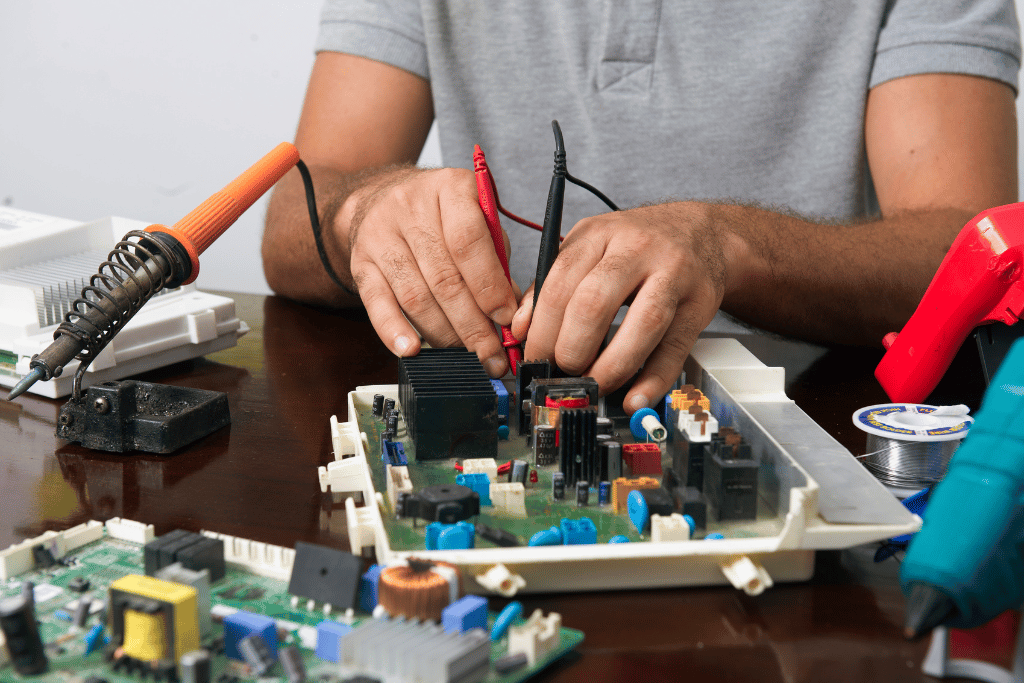Extreme-heat workplaces such as foundries, refineries, aerospace test cells, and mines require parts that hold shape and strength where metals add weight, corrode, or increase machining costs. Modern high-temperature plastic components offer a lighter option that still meets demanding thermal, mechanical, and chemical requirements when engineered and validated specifically for heat exposure. Partnering with plastic manufacturers in Illinois brings local expertise in tool steel hardening, clean-room molding, and in-house thermal testing.
What “High-Temperature” Means in Plastics
Engineers evaluate three measures rather than a single melting point. Heat-deflection temperature shows when a loaded sample begins to sag. Vicat softening temperature marks the point at which a rigid sample turns rubbery. Continuous-use temperature indicates how hot a part can run for thousands of hours before its properties drop by half. Materials such as PEEK, PPS, polyimide, and heat-stabilized nylon reach values above 250 °C and remain reliable after repeated thermal shock.
Design Priorities for Life-Safety Components
Life-safety housings, valve seats, and sensor carriers must resist creep under long-term load, extinguish flames quickly, and withstand chemical splash at elevated temperature. Reinforced PEEK or glass-filled PPS limit deformation while additive packages achieve a UL 94 V-0 rating without dripping. Because plastics expand more than metals, careful slot and rib geometry, or where required, hybrid over-molding, prevents stress cracks when the assembly cycle, from sub-zero starts to operate at heat.
Proving Reliability Before Production
Validation replaces guesswork with data:
- Thermal aging ovens hold parts at the continuous-use temperature for weeks, then measure tensile and impact retention
- Rapid thermal-shock chambers swing from –40 °C to +200 °C in minutes to reveal micro-cracking
- Flame-spread tunnels quantify smoke density and ignition potential for confined-space approval
- Finite-element simulation confirms wall thickness and vent placement before a mold is cut, reducing tooling iterations
Why Injection Molding Remains the Preferred Route
Scientific molding matches cavity pressure and cooling profiles to laboratory test conditions, keeping dimensions within 50 µm on complex geometries. Integrated features such as threads, sealing beads, and precision channels form in one cycle, eliminating secondary machining. Once the tool is proven, cycle times under a minute beat multi-step metalworking and provide rapid scale when life-safety orders surge.
Emerging Developments in Extreme-Heat Polymers
- Nanofiller blends improve thermal conductivity, allowing faster heat dissipation without metal inserts
- Recyclable high-temperature grades maintain a V-0 flame rating, helping original equipment makers meet stricter sustainability targets
- Molded QR codes link each part to its exact oven-cycle history, making compliance audits easier and more transparent
Maintaining Reliability in Extreme Heat
When failure is not an option, validated high-temperature plastic components outperform heavier alternatives and keep critical systems running in the harshest environments. To discuss material trials, mold design, and production readiness for your next life-safety program, contact Hansen Plastics Corporation for expert guidance.



